Enab Baladi | Amal Rantisi
One massacre after another in Syria reveals the brutality of the perpetrators who brag about their crimes or justify them; at a time when the world has been buzzing for days and statements were issued denouncing and demanding accountability, then soon the uproar subsides to find voices calling for normalization with the killers.
Meanwhile, the grief feeds the hearts of survivors and families of victims as they see those involved in these crimes without accountability.
Since The Guardian published its report on the Tadamon massacre, accompanied by shocking footage of 41 people being executed in the southern neighborhood of Damascus last week, the Syrians have recalled the massacres of the Syrian regime in a lament that lasted for several days on social media and news outlets.
The two-year-old investigation based on open-source intelligence and numerous interviews, which also was published by the American New Lines magazine on 27 April, documented the killing of more than 280 civilians in the neighborhoods of southern Damascus in 2013 who were executed in a mass grave that had been prepared in advance by the District Branch of the notorious Military Intelligence Division, also known as Branch 227.
The videos, the most severe of which were circulated, showed the killing of 41 unarmed civilians, blindfolded, by Military Intelligence officers at the time, Amjad Youssef and Najib al-Halabi.
People were thrown into a pit prepared for this purpose in the middle of an uninhabited street in the Tadamon district, and after they finished shooting the victims one by one, the perpetrators set the bodies of their victims on fire by burning tires previously placed at the bottom of the pit.
The investigation stirred up local and international outrage, recalling other massacres and similar leaks, the most prominent of which was the leak of 55,000 photos of 11,000 detainees in 2014 by the defected military photographer dubbed as “Caesar,” which led the US to approve the Caesar Syria Civilian Protection Act of 2019 that sanctions the Syrian regime, including Bashar al-Assad, for war crimes against the Syrian people.
In this file, Enab Baladi discusses with lawyers and human rights advocates the possibility of using the killing footage and video recordings that identify the perpetrators in holding the preparators accountable and the chances of imposing additional sanctions on the Syrian regime.
Syrian intelligence “Deep darkness”
The Guardian’s Middle East affairs correspondent, Martin Chulov, said during his comment on the newspaper’s report that included the massacre that the footage gave us a glimpse into the hidden section of what happened in Syria for ten years.
We watched many videos of the (Islamic State) group committing atrocities and sometimes of the opposition factions and the militias affiliated with the Assad regime. However, we did not see with this clarity the (deep darkness) of the Syrian intelligence, and here we can see (irrefutable evidence) of many atrocities, barbarism, and cruelty, and what we wish from this video and other videos that may appear, to start showing some kind of justice to the thousands of families who are still searching for their loved ones.”
According to what the Syrian lawyer and human rights activist Al-Mutassim al-Kilani sees, the importance of the investigation lies in uncovering the crimes of the Syrian regime, its security services, and militias, especially since it was published by The Guardian and directed to the West.
The world is now turning its attention to the violations taking place in Ukraine by the Russians instead of what happened during the 11 years in Syria, al-Kilani told Enab Baladi, considering it a good opportunity to shed light on the criminal in Syria.
During the early years of the Syrian revolution during the past decade, human rights violations and war crimes were documented through video clips, evidence, and testimonies proving the Syrian regime’s involvement.
It started from documenting the shooting of peaceful demonstrators at the beginning of the revolution, through a series of arrests and killings under torture and liquidations, and mass massacres committed with chemical weapons, ending with the scorched-earth policy witnessed by the cities of Syria backed by the Russian airstrikes.
The Guardian’s investigation is not a new element for the Syrians, as many footages have appeared indicating that al-Assad and his elements committed crimes against civilians, such as footage by Zaman al-Wasl news website published in August 2021, showing military intelligence agents burning the bodies of detainees with the help of members of the regime forces in southern Daraa province.
Zaman al-Wasl’s footage documented the burning of the bodies of detainees between 2011 and 2013 by members of the Military Intelligence and the Air Force in one of the desert areas of Daraa countryside.
The New York Times also published an investigation in cooperation with the Association of Detainees and The Missing in Sednaya Prison (ADMSP) on the sites of mass graves in Syria and their role in proving and documenting war crimes committed by the Syrian regime.
It was preceded by leaked “Caesar” photos of thousands of victims of detainees who were killed under torture and thousands of video recordings from the revolution’s archives that show the regime’s criminality.
Al-Kilani said that all of this evidence help prove the systematic crimes committed by the Syrian regime and its security services, “but in reality, it is not possible to benefit from universal jurisdiction to fully try the regime” because its legal authority only allows for the prosecution of individuals directly involved in and related to these violations, if they were the executors or those who issued the order or contributed to that.
The rights advocate stressed that it was impossible to go to the International Criminal Court because Syria did not sign the Rome Statute, and it was not possible to go to the Prosecutor through the UN Security Council as a result of the Chinese-Russian intransigence through the permanent veto that hinders the transfer of the file of violations in Syria to the International Criminal Court.
“We have an option that may open the way for international justice in the future, through the complaint submitted by the Netherlands and Canada to the International Court of Justice due to the Syrian government’s failure to fulfill and guarantee its obligations signed in the Convention against Torture,” al-Kilani adds.
He also pointed out that the evidence collected will be useful in investigations that prove violations and that these crimes are not subject to a statute of limitations or changes in circumstances.
Crematoriums
The regime forces and allied militias have used the policy of burning people alive to death, in addition to burning the bodies of people after their execution, in a large way, since the start of the peaceful protests in Syria in 2011.
The Syrian forces significantly escalated the burning operations in 2012, and these events continued over the following years, according to a report by the Syrian Network for Human Rights (SNHR) in February 2015.
Statistics show, according to the report, that the regime forces’ use of the method of killing by burning or burning bodies after killing is a systematic policy followed by these forces, accompanied by many massacres.
The SNHR report said that the regime forces carried out extensive operations in which the bodies were burned after killing or slaughtering the victims, either out of revenge or hatred, to deter and terrorize the local community, or in order to hide the features of the bodies and victims, and thus conceal the crime.
There were cases of burning of women after sexual assaults were practiced against them.
The report added that the cremations were carried out either in the form of individual cases or, as it appeared in many cases, they were carried out collectively and against a sectarian background.
Many of the cremations were accompanied by sectarian massacres and were committed by local and foreign militias in coordination and cooperation with the regime forces.
Similar to Caesar Act
The Syrian-American organizations supporting the Caesar Act had previously worked to bring it to the US Congress in 2019, as several organizations participated in supporting the law, and the role of the Americans for a Free Syria organization was represented by the lobby groups that include permanent representatives in Congress. They contribute to the introduction of laws and the payment for their passage.
Other organizations, such as the Syrian American Council and the Syrian Organization for Emergencies, helped promote the law and educate members of Congress about its importance in ratifying it.
| “The Caesar Syria Civilian Protection Act, passed into law on 17 June 2020 as part of the most recent National Defense Authorization Act, dramatically expands the authority of the US government to sanction businesses, individuals, and government institutions for economic activities that support the Assad regime’s ability to wage war.” Brookings |
Mohammad al-Abdallah, the executive director of the Syrian Justice and Accountability Center (SJAC), does not believe that the investigation and the video recording are different from the rest of the evidence, likening the footage to Caesar’s torture photos.
In an interview with Enab Baladi, al-Abdallah said that there is evidence of brutality with violence, crimes, and the liquidation of detainees, and some different points that provide more clarity and brightness to the crime of cold-blooded murder and the liquidation of people who are not arrested despite what the Syrian regime always promotes that those who were killed were “fighters” or “terrorists.”
However, on the footage, it is clear that the people were civilians who were led directly from a checkpoint in their clothes, and it is clear that they were not under arrest by looking at their civilian clothes and that they were executed without reason, without trial, and in cold blood.
Therefore, the clarity of this massacre, and the accompanying recording, may be different, as it shows the world the details of the massacre, but it is not different in its legal value as evidence from the rest of the evidence from inside Syria, the most important of which are the Caesar torture photos until today, al-Abdallah said.
The Director of the SJAC told Enab Baladi that his center had collected 1.5 million video recordings before YouTube deleted them, in addition to collecting documents from the Syrian security services that fell into the hands of officers who defected from the army or were left in areas controlled by the opposition forces.
The size of these documents is 500,000 paper pages, which were produced by the team of notaries at the center in cooperation with partner human rights organizations that produced other documents, including photocopies of the origin, according to al-Abdallah.
Regarding the contribution of the new evidence to imposing additional sanctions on the Syrian regime, Ibrahim al-Olabi, a lawyer in the Guernica 37 group and director of the Syrian Legal Development Program, believes that this evidence could lead to the imposition of new sanctions, but the sanctions in the recent period were against individuals in the Syrian regime, considering that the individuals in the video will not be affected by economic sanctions.
Al-Olabi told Enab Baladi that it is possible to add security branches to the sanctions lists, despite the symbolism of this step at the expense of its effectiveness. The political and security services of the Syrian regime are not affected by the economic sanctions, as they are not economic agencies in the first place.
For example, when the Saydnaya military prison was placed on the US sanctions list and banned from dealing with the global economic system. These are symbolic steps by the United States to classify Syrian prisons and detention centers as bad places, but the sanctions are still a step greater than a statement and less than a legal move, the lawyer added.
As for the mechanism that human rights organizations or persons conducting the investigation can follow to push for accountability, al-Olabi explained that there are human rights organizations that sent the case to the Special Rapporteur on extrajudicial killings or summary and arbitrary measures.
The lawyer emphasized that publishing the matter in the media pushes towards accountability, which is not limited to the issue of trials, but to put this file back on the human rights table was good, as there were movements from foreign affairs, international, and media pressure, and public opinion mobilization, and this matter has been missing for some time in the Syrian case.
On the way to EU courts
Fadel Abdul Ghany, chairman and founder of the Syrian Network for Human Rights (SNHR), said the most prominent lead of The Guardian report is the researchers’ ability to reach the identity of the first person responsible for the Tadamon massacre, Amjad Youssef.
Abdul Ghany wrote on his Facebook account, “There was a meeting with the United Nations Special Rapporteur on the promotion and protection of human rights in the context of combating terrorism, and she spoke about the investigation and video recording, within the context of the need to characterize the actions of brutal regimes such as the Syrian regime as terrorist actions, if what Amjad and his gang did were not acts of terrorism under the patronage and complete immunity of Bashar al-Assad, then what is terrorism?”
The footage was submitted to three public prosecutors in Europe, in Germany, France, and the Netherlands, to start judicial procedures, according to Abdul Ghany.
Regarding the possibility of using the footage to file a criminal case in the courts, al-Abdallah, the director of the Syrian Justice and Accountability Center, explained that it is certainly possible to file cases, but he wondered that it is against whom this lawsuit will be, given that there is currently no international court for Syria, and that there is no possibility of referral to the International Criminal Court, as litigation is limited to EU countries whose laws allow for the prosecution of war crimes and crimes against humanity.
Youssef, the intelligence operative who appeared in the recording, is not on European soil, so there is no possibility to try him in absentia, as national legislation or laws in these countries do not allow trials in absentia, according to the principle of universal jurisdiction of human rights.
Al-Abdallah sees that it is possible to issue an international arrest warrant similar to the arrest warrants issued against al-Assad’s top aides like Maj. Gen Ali Mamlouk and Maj. Gen Jamil al-Hassan, but this does not mean that Youssef will be handed over, brought to justice, and put on trial.
Also, knowing the details of this massacre and the identities of the victims, the motive behind it, and the people who ordered it, this information is not accessible, al-Abdallah added.
Universal jurisdiction (or the principle of universal human rights jurisdiction) is one of the primary tools for ensuring that violations of international humanitarian law are prevented and, if committed, punished through the imposition of criminal sanctions.
The Geneva Conventions of 1949 state that states parties are obligated to track down suspected perpetrators of grave breaches (war crimes), regardless of their nationalities and where the alleged crime was committed, and bring them to its courts or hand them over to another state party to the conventions for trial.
Additional Protocol I of 1977 expands the scope of this obligation to include the grave breaches defined therein, according to the website of the International Committee of the Red Cross (ICRC).
Al-Abdallah expressed his reservations about the method of “extracting the confession” from Amjad Youssef due to the possibility of refuting the allegation by any defense lawyer, for example, questioning the identity of the Facebook account attributed to Amjad Youssef, as well as questioning such confession in any court report, arguing that it was not he managing the Facebook account.
But according to the investigation of Uğur Ümit Üngör and Annsar Shahhoud, who obtained a large amount of information by creating a fake Facebook account in the name of “Anna Sh,” as an Alawite researcher studying the Syrian regime’s army for her thesis, and after several attempts, some of which failed due to Youssef’s suspicions, Anna was able to obtain confessions from him that he had committed many killings, in retaliation for the murder of his brother months before the Tadamon massacre, according to The Guardian report.
| “You did what you needed to do, I killed a lot… I took revenge.” Amjad Youssef’s first real admission to Anna Sh. The Guardian |
Does footage spread affect the trial?
Following The Guardian’s carefully-selected footage first appeared, the Syrian activists circulated the full footage with high accuracy and quality, spreading like wildfire among Syrians, which pushed the researcher Shahhoud to call to stop its circulation out of respect for the victims and their families, and the judicial and human rights track.
The circulation of the massacre footage on Syrian social media in the Syrian community was negative because it does not take into account the sanctity of the victims and their feelings on the one hand.
The human rights activist, al-Abdallah, has absolutely denied that circulating the footage constitutes a weakness of evidence from a legal point of view, considering it negative in other respects, such as taking into account the feelings of the victims who will witness their loved ones being killed.
On the other hand, it is possible to ask more even about revealing the identity of the perpetrators themselves and not just the victims, as the perpetrator is still inside Syria, in such a case, what will happen to Youssef, for example, who knows that if he leaves Syria, he will be tried, and most likely the regime forces will liquidate him, al-Abdallah added, emphasizing that publishing the identity of the perpetrators is an advocacy procedure, rather than a judicial or legal procedure.
He justified that when you tell a person that he will be wanted in European courts, he will have no incentive to leave Syria, but it is possible, for example, after years, if Youssef left Syria for any European country, and he applied for asylum, he will be surprised by the evidence against him, and he can be tried accordingly.
Al-Abdallah believes that there will be no trial in the near future because Youssef has become aware that he may be wanted in European countries, and just as the Syrian regime will work to obliterate the features of the crime and thus liquidate the persons participating and whose identities were revealed.
Landmark trials of Syrian war criminals
European courts are witnessing a series of trials that track war criminals in Syria, the most prominent trials took place in Germany at Frankfurt’s Higher Regional Court and the Higher Regional Court of Koblenz.
Alaa Mousa, the killer doctor
On 19 June 2020, the German authorities arrested Alaa Mousa, 36, who arrived in Germany in 2015 and practiced medicine there until his arrest. He is accused of crimes against humanity, including torture and murder, and allegedly administered a lethal injection to a prisoner who resisted being beaten, according to German federal prosecutors.
German federal prosecutors say Mousa worked in military hospital 608 in the Syrian city of Homs and military hospital 601 in the capital Damascus, where injured detainees were brought after being arrested for opposing Assad’s regime, the AP reported.
At the trial of Frankfurt’s Higher Regional Court, Mousa faces 18 counts of torturing detainees at military hospitals in Homs city and Damascus in 2011-12, including setting fire to a teenage boy’s genitals, reports said.
According to the AFP, Mousa left Syria for Germany in mid-2015, arriving not as a refugee but on a visa for skilled workers. He worked in several places as an orthopedic doctor, including in the spa town of Bad Wildungen, before being arrested in June 2020 after Syrian witnesses came forward.
More trials tracked the Syrian war criminals in France, Norway, and Austria. In 2017, Sweden became the first country to convict a former regime army soldier of a war crime.
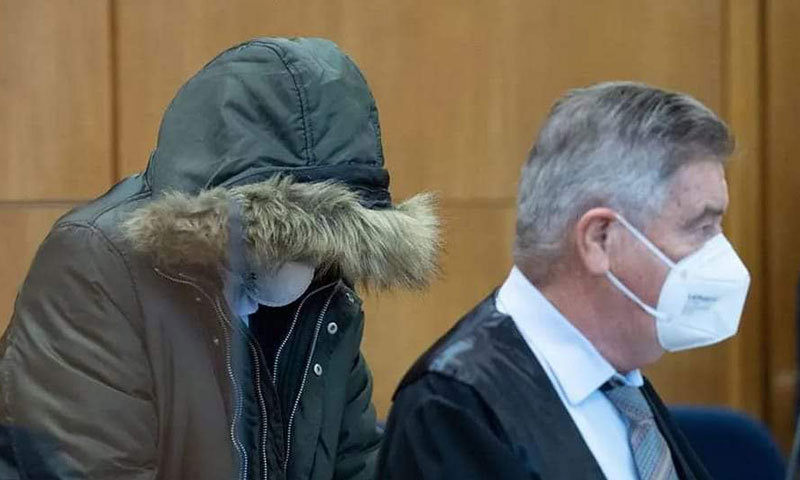
Alaa Mousa (L) stands next to his lawyer Ulrich Endres (R) as he waits on 19 January 2022 at court in Frankfurt am Main, western Germany (Boris Roessler / POOL / AFP)
Anwar Raslan and Eyad al-Gharib trials
On 13 January, the Higher Regional Court in the town of Koblenz, southwestern Germany, issued its second verdict in the case of the two Syrian officers accused of being responsible for crimes against humanity carried out in Syrian regime detention centers in Damascus.
The court judge sentenced the ex-intelligence officer, Anwar Raslan, 58, for life for murder, rape, and “crimes against humanity,” handing down the first-ever conviction for state-backed torture committed during Syria’s war after a landmark trial.
According to Reuters, Raslan was found guilty on 27 of out 58 counts of murder, rape, and sexual assault carried out at a Damascus prison run by a unit of Assad’s security services that he headed.
The court based its verdict on about 100 testimonies, as many torture survivors met face to face with Raslan, the former head of the investigation department in Branch 251.
The perpetrators gave detailed accounts of physical and psychological abuse, as well as overcrowded cells where they were denied food, water, and medical treatment.
The court also relied on the leaked torture photos of Caesar mainly to prove cases of torture inside Branch 251.
In February 2021, the court sentenced Eyad al-Gharib to conviction and four and a half years in prison for “crimes against humanity.”
Al-Gharib is considered the lowest-ranking official in the case after Raslan, who was previously accused of inciting torture against detainees, detaining people in 2011, and handing them over to Branch 251, where they were subsequently tortured.
In addition to these two trials, which took a wide interaction in Syria, there are a number of trials of members and people accused of involvement in war crimes from various parties to the conflict who were arrested after their arrival in Europe.

Eyad al-Gharib hides himself under his hood in court in Koblenz, western Germany – 4 June 2020. AFP – Thomas Lohnes
if you think the article contain wrong information or you have additional details Send Correction
النسخة العربية من المقال
-
Follow us :
Most viewed
- Clashes and airstrikes: What’s happening in Latakia
- 311 casualties among government forces and civilians in Syrian coast
- Demonstration in As-Suwayda opposing Damascus government
- Rights organization documents government and civilian deaths in Syrian coast
- Al-Shibani: Syria is facing a hidden and declared war












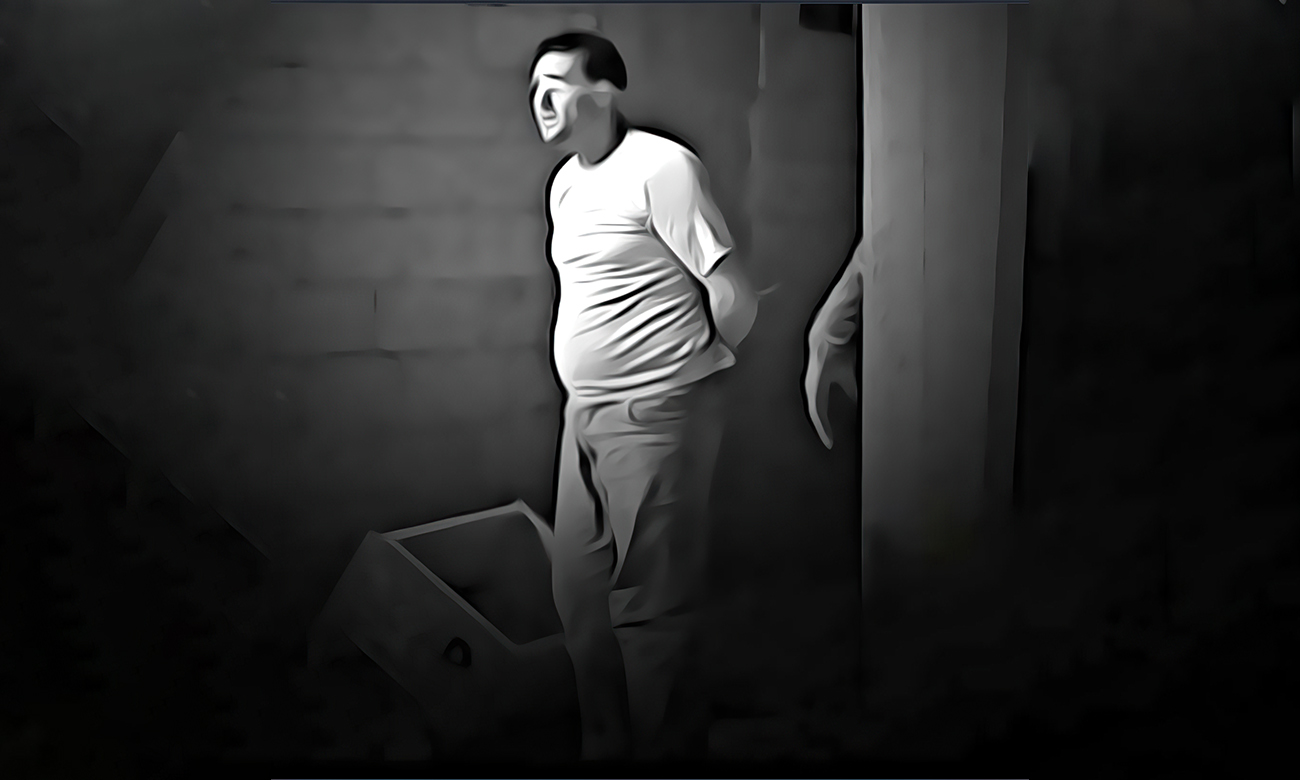
 A screenshot from the leaked video of the Tadamon massacre that took place in the southern neighborhood of Damascus in 2013 (edited by Enab Baladi)
A screenshot from the leaked video of the Tadamon massacre that took place in the southern neighborhood of Damascus in 2013 (edited by Enab Baladi)





 A
A
A
A
A
A
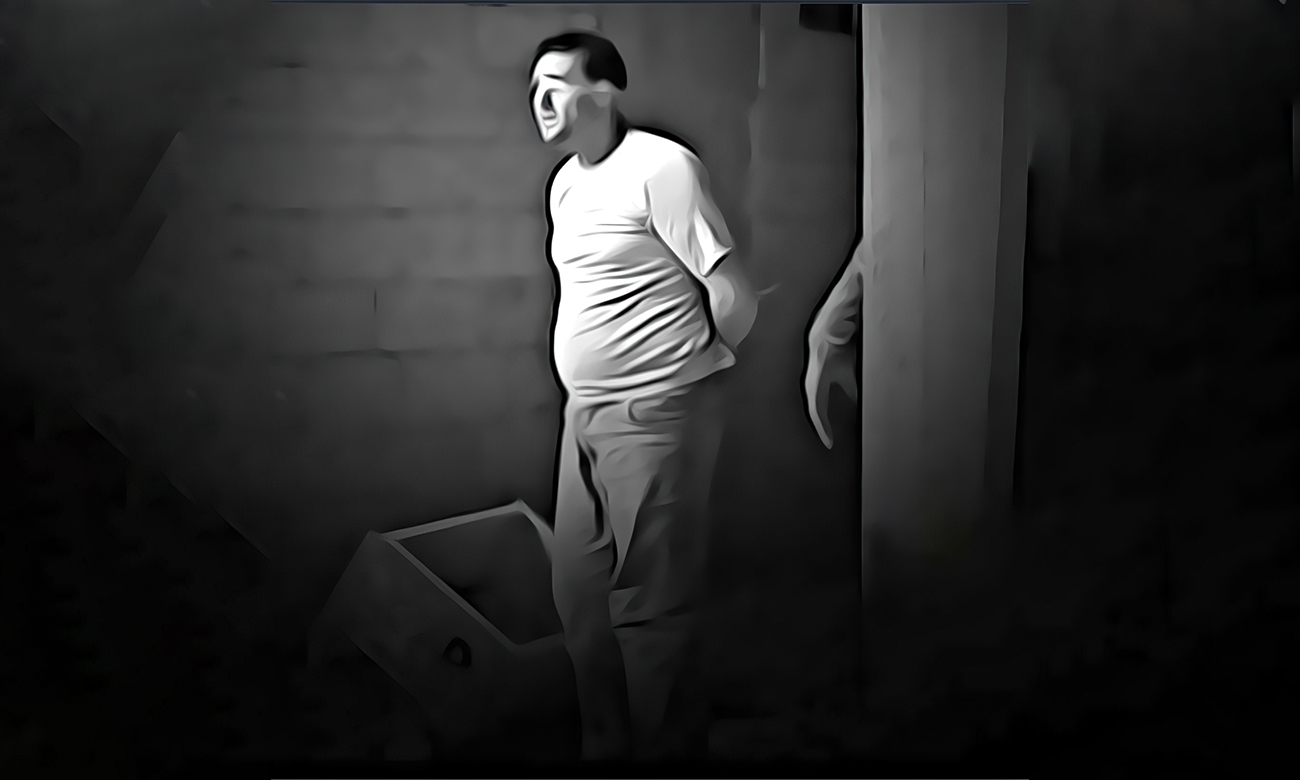
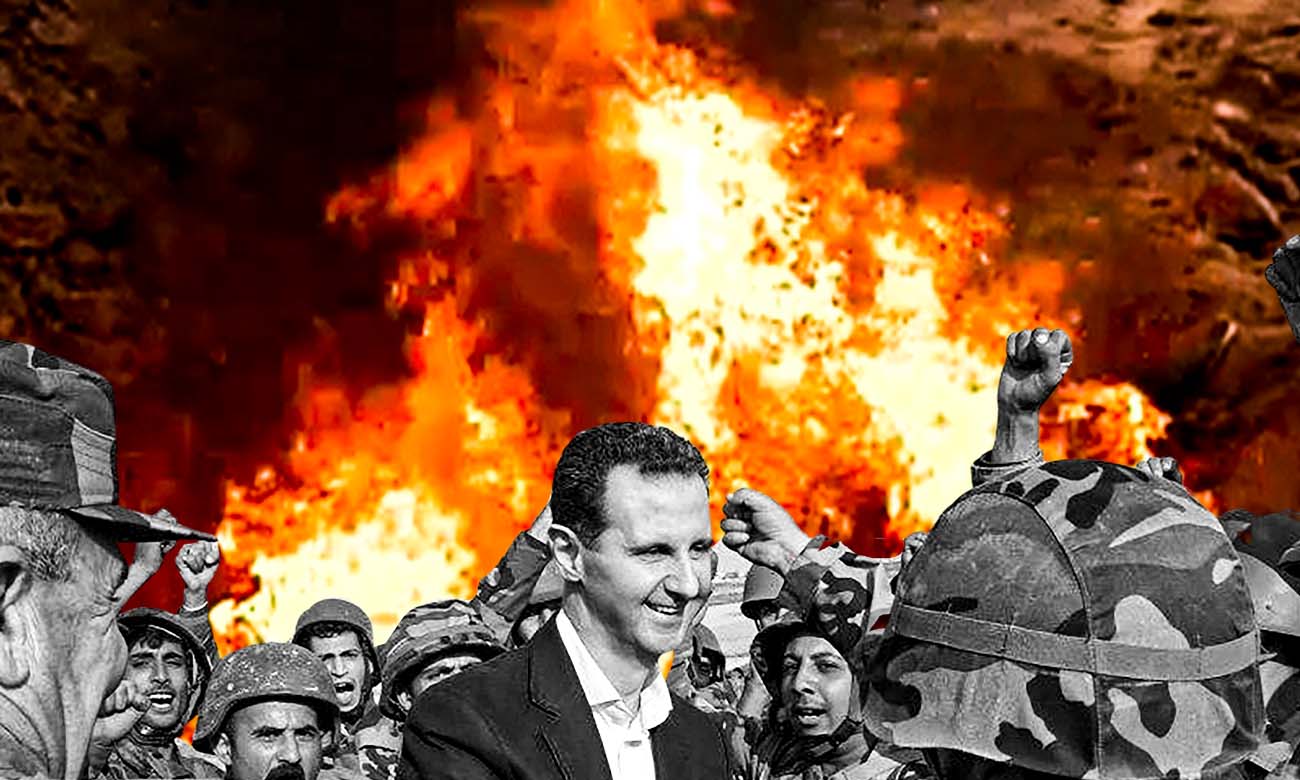
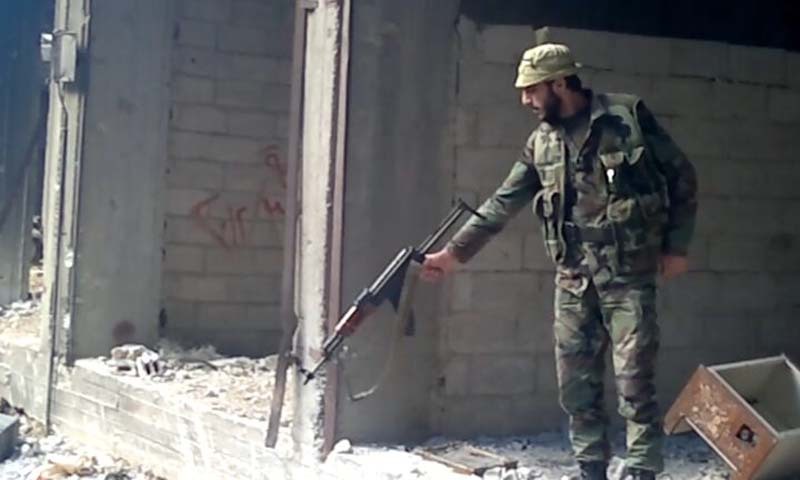
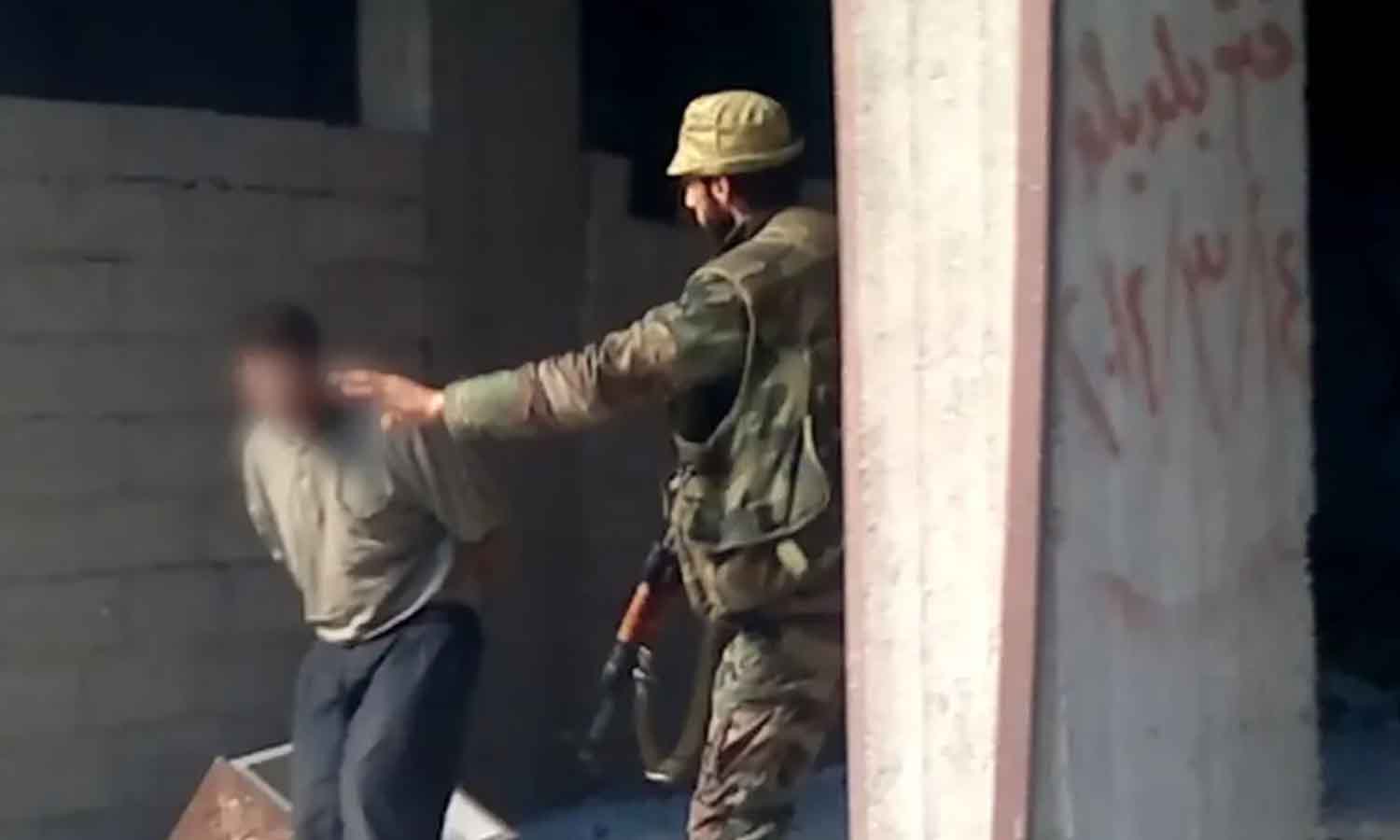



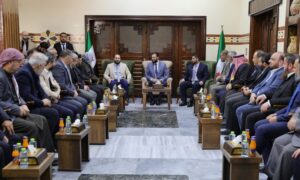
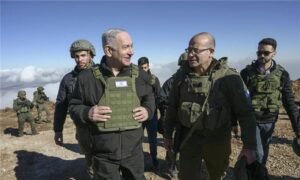
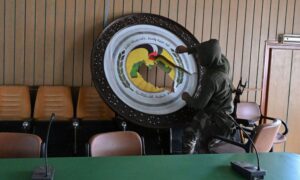
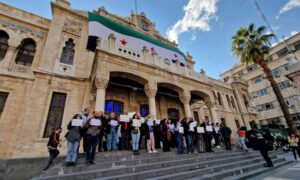
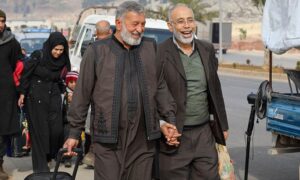
 More In-Depth
More In-Depth